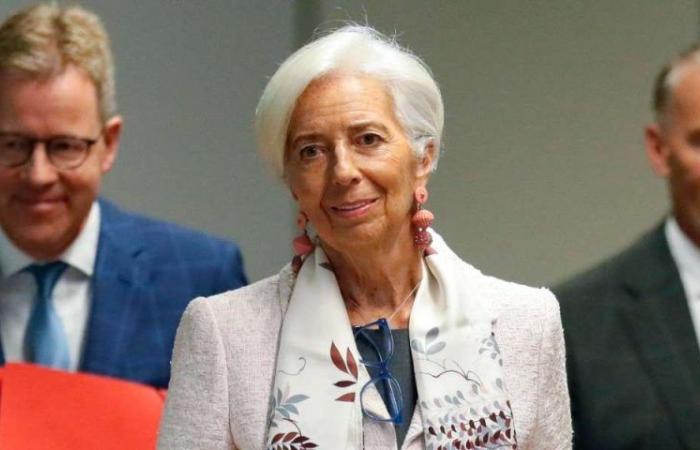Since central banks have existed, their main task has been to preserve the value, and therefore the purchasing power, of the currency they issue. From this perspective, their main enemy is inflation, the generalized increase in prices which mirrors the loss of value of the national currency compared to the goods that are sold and purchased with that currency. Since economic systems tend to record growth in real GDP terms over time, central banks should accommodate this increase by allowing the money supply to grow at the same rate as real GDP, so as to allow the greater goods produced to be exchanged, more a delta corresponding to a normal, physiological rate of increase in prices, traditionally set at 2%.
If inflation tends to exceed this level, the central banks become alarmed and evaluate whether to implement restrictive monetary policies, so as to slow down the growth of the money supply and with it reduce the rise in prices to milder dynamics. But can central banks ignore economic growth? Can they have as their sole objective the reduction of inflation even if this proves to be very costly in terms of economic growth that must be given up to obtain it?
The question is of great interest, but for almost the entire first forty years of existence of macroeconomics, whose date of birth we can set at the publication in 1936 of Keynes’ fundamental work, the “General Theory of Employment, Interest and Money”, could not be placed. In fact, inflation manifested itself in the positive phases of the economic cycle, when growth was running too fast and therefore it was reasonable to use the brake pedal. Instead, in the negative phases of the cycle the macroeconomic evil became recession, with its corollary of unemployment, but inflation, as a consequence of low aggregate demand, dissolved and therefore justified using the accelerator, even the monetary one. There were therefore no recessive costs of disinflation because when there was inflation there was no recession and vice versa.
But from the 70s of the oil shocks onwards we have become accustomed to the simultaneous presence of inflation and recession, both produced on the side of the production of goods, of the supply, which has become more expensive, and no longer on the demand side. We called it stagflation, two Siamese evils for which demand policies, both fiscal and monetary, are effective remedies. In fact, if they are used in a restrictive sense they reduce inflation but increase recession while if they are used in an expansive sense they attenuate recession but increase inflation. The inflationary shock ignited by Russian gas already in the second part of 2021, even before the invasion of Ukraine, is exactly of this type, increasing production costs and generating both inflation and a slowdown in the economy.
In these cases, central banks cannot ignore the recessive costs of the disinflationary policies they conduct. Unfortunately the ECB did it. It began to increase rates, which were at zero level, in mid-2022, when inflation was about to exceed the trend of 10% and in ten consecutive increases and in just fourteen months it brought them to 4.5% despite in that same period inflation had halved, only to be reduced to a quarter in the time that has passed since then.
But did inflation reduce in just a few months due to high ECB rates or because gas and oil prices quickly returned to their initial levels after exploding? If the first hypothesis were true we would be faced with a resounding denial of all the studies on the long and uncertain times of the effects of monetary policy, we would even have gone from effects in long and uncertain times to effects that are almost instantaneous… We should then give the Nobel Prize for economy to the ECB board.
While we have formulated our criticism of the ECB several times, a second and new criticism of the ECB is the following: given that the Central Bank has the control of inflation as its sole objective and is not interested in the recessive costs of disinflation, at least the phenomenon inflationary should be able to understand it, dominate it and above all predict it. We were therefore amazed to read a recent interview by Governor Lagarde to a group of European economic newspapers in which she stated in summary that she does not know what will happen to inflation in the immediate future, whether it will continue to reduce, remain stagnant or change direction, and consequently the ECB is waiting to see how inflation will behave to decide whether or not to continue with the decline in interest rates, which it started very timidly at the last meeting.
Such an attitude increases macroeconomic uncertainty rather than, as it should, reduce it. A central banker is not paid to wait for inflation numbers, but to predict them and if possible influence them. Therefore the correct answer should have been: “We expect inflation to spontaneously return within the target value, having already covered almost 95% of the way back in the last year and a half, and accordingly we expect to continue in the rate reduction path. Obviously if we are proven wrong, but the probability is very small, we will correct our policies.”
This would have been a very effective way to influence the inflation expectations of economic operators because if the ECB does not know where inflation will go, why should individual economic agents know it better than it? And if the ECB believes that inflation will return to normal, why shouldn’t the individual economic agents of the euro countries believe it? There are only four possible causes of inflation:
– from the issuance of money in countries in which the Central Bank is dominated by the deficit spending needs of the Governments, but this is not the case of the ECB, built independently of the Governments and prevented from the outset from purchasing public securities at time of their issue;
– from the question, but when is the last time we saw an economic cycle so expansive as to produce tensions on prices?
– by costs, and this is the typical case of the last half century; it generates inflation that is costly to reduce precisely due to the recessive effects of the disinflationary cure;
– finally inflation from inflation expectations…
The latter does not arise from stable prices, but is usually grafted onto an inflation originally produced by another cause, for example that of costs, as experienced in our country in the 70s and 80s. Those on inflation are expectations that usually self-verify because if the unions have inflation expectations they will behave accordingly in the renewals of employment contracts and if the producers have inflationary expectations on costs and prices, they will immediately begin to adjust the price lists.
But inflation from expectations is also the easiest and least costly to remove. Just convince that it is a false belief. And who can remove it by convincing, who is the fireman of expectations? But the Central Bank, of course…
— — — —
We need your contribution to continue providing you with quality, independent information.
SUPPORT US. DONATE NOW BY CLICKING HERE
© ALL RIGHTS RESERVED






